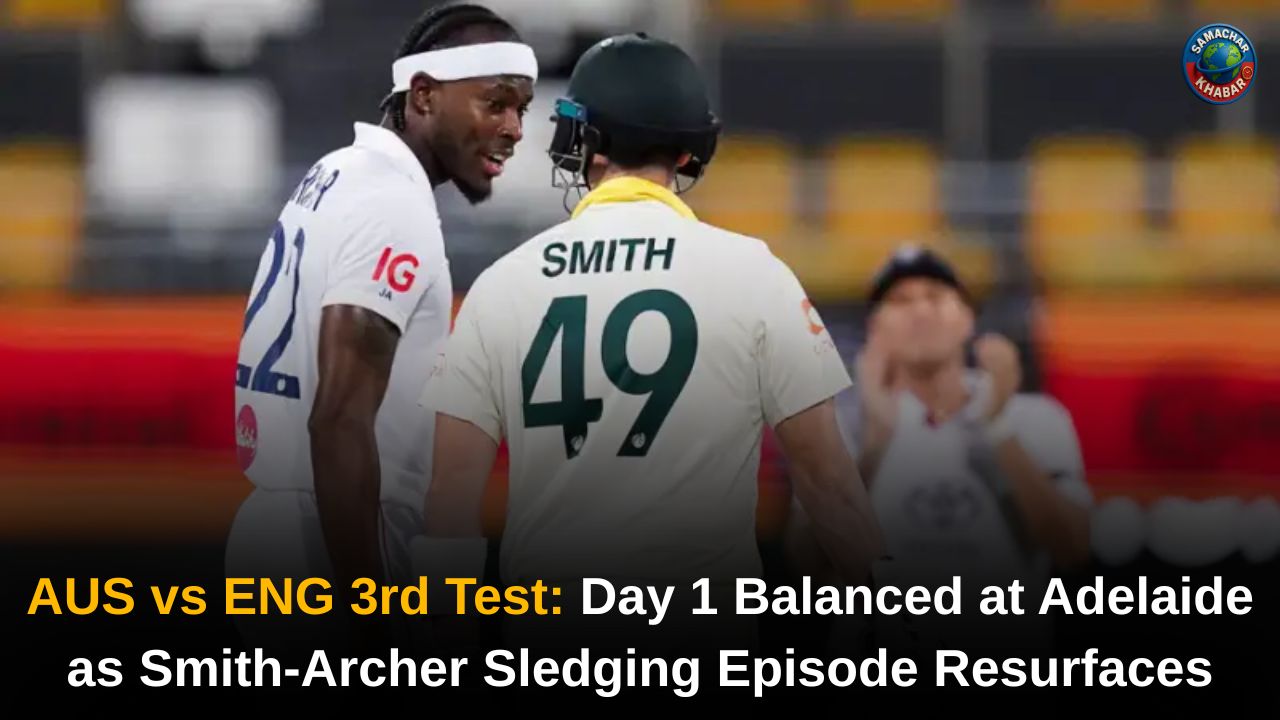Delhi’s Last Hope Hinges on Cloud Seeding (Artificial Rain): Delhi is attempting a controversial, first-of-its-kind experiment: inducing artificial rain via cloud seeding to wash away the toxic post-Diwali smog. The air quality has plummeted into the “severe” and “hazardous” categories, with AQI readings at some stations surging beyond 1,300. Facing its worst air crisis in years, the regional government, led by CM Rekha Gupta, is set to deploy aircraft on October 29 to disperse seeding agents over the city.
While authorities hail the move as a “technological milestone,” atmospheric scientists are sharply critical, labeling the costly, short-term fix a diversion that ignores the root causes of the capital’s chronic air pollution.
Delhi Air Emergency: Key Takeaways on Cloud Seeding and Pollution Crisis
The situation demands immediate attention. Here are the most crucial facts regarding Delhi’s current pollution crisis and the government’s response:
- Hazardous Air Quality Post-Diwali: Air quality plummeted to “hazardous” levels after the Diwali festival. AQI readings at sites like Mandir Marg and Lodhi Road surged above 1,300.
- Cloud Seeding Date & Location: The city’s first artificial rain is scheduled for October 29, contingent on favorable weather. A successful trial was conducted over the Burari area.
- Technology & Chemicals: The process involves aircraft releasing a mix of silver iodide, iodised salt, and rock salt into clouds to induce precipitation.
- Scientific Skepticism: Experts, including IIT Delhi professors Shahzad Gani and Krishna AchutaRao, condemn the plan as a “gimmick” and a “textbook case of science misapplied.”
- Worst Air Quality in Years: Delhi is currently facing one of its worst pollution episodes in years, with its air reducing the average life expectancy of residents by approximately 12 years.
- Natural Rain Forecast: The IMD predicts light rain or drizzle from a Western Disturbance between the evening of October 27 and the morning of October 28.
The Toxic Backdrop: AQI Readings in the Red Zone
The push for cloud seeding stems directly from the calamitous air quality recorded immediately after Diwali. The seasonal cocktail of pollutants—including smoke from crop burning, factory emissions, and heavy traffic—is trapped by stagnant winter air, creating a thick, brown haze.
On Monday, as the crisis escalated, the city’s air quality was generally recorded as “very poor” (readings above 300). Specifically, the Central Pollution Control Board’s Sameer App noted:
- Anand Vihar recorded an AQI of 431 (“severe”).
- Bawana recorded an AQI of 401 (“severe”).
- A startling 23 out of 38 monitoring stations reported “very poor” or worse air quality.
By Tuesday, the situation became critical, with several areas hitting a “hazardous” range. These pollution levels are consistently far above the PM2.5 and PM10 concentrations seen during the famed 2013 pollution crisis in Beijing, reinforcing Delhi’s status as the world’s most polluted city for over a decade. The city’s pollution levels rose by 6% in 2024.
Cloud Seeding Mechanism and Government Timeline
The regional government views cloud seeding as an emergency scientific intervention. Chief Minister Rekha Gupta stressed that the preparations have been completed for the procedure, marking a “significant technological milestone” in the capital’s fight against air pollution. Environment Minister Manjinder Singh Sirsa confirmed that all necessary systems, including aircraft and comprehensive meteorological and environmental monitoring, are in place.

The overall window for the cloud seeding activity is scheduled for the two days preceding and the day of the initial plan: October 28 to October 30. However, the primary date, pending favorable weather, is October 29.
The technique involves:
- A small aircraft or drone flying into moisture-rich clouds.
- Dispersing seeding agents—primarily silver iodide, along with iodised salt and rock salt.
- These agents serve as nuclei, around which water droplets cluster, leading to accelerated precipitation.
- The resultant rain is intended to physically wash out the suspended fine particulate matter (PM2.5 and PM10), temporarily lowering the AQI.
The Chief Minister’s decision followed a test run over Burari and comes after the BJP’s cloud-seeding plans were previously put on pause due to months of unpredictable weather over the capital.
Natural Rain and Current Weather Dynamics
Adding a complex layer to the weather-modification effort is the naturally occurring rain forecast.
Also Read: IMD Issues Heavy Rain Alert for 5 States Till October 28; Delhi to Stay Sunny and Dry
The IMD’s Friday bulletin indicated that a fresh Western Disturbance is likely to impact the western Himalayan region and adjoining northern plains from October 27 to the morning of October 29. Under its influence, Delhi is expected to witness one or two spells of very light rain or drizzle from the evening of October 27 to the morning of October 28.
Regarding temperatures, Monday’s minimum was 18 degrees Celsius, with the maximum settling around 29-31 degrees Celsius. Notably, the temperature had dropped to 15.9 degrees Celsius on Sunday, setting a record for the lowest temperature in October in the last two years.
Scientific Backlash: Is Cloud Seeding an Ethical Diversion?
The government’s enthusiasm is starkly contrasted by widespread expert skepticism. Atmospheric scientists argue that this expensive measure is simply a way to avoid the hard work of long-term emission control.

Shahzad Gani and Krishna AchutaRao, professors at Delhi’s Centre for Atmospheric Sciences, penned a sharp critique:
- They condemned the measure as a “gimmick,” equating it to the largely ineffectual “smog towers” erected by the previous government, which cost billions of rupees.
- They called the plan a “textbook case of science misapplied and ethics ignored.”
- Experts emphasize that cloud seeding is “no panacea.” It requires suitable clouds, which are often not present over Delhi during the cold winter when pollution is at its peak.
- Furthermore, they warned that there is little research into the long-term effects of the repeated use of chemicals like silver iodide or sodium chloride on agriculture and human health.
The core criticism is that this method offers, at best, a short-lived respite and does not address the root causes of pollution, which are the only path to securing lasting improvements in air quality.
Inner Transformation: A Spiritual Response to Ecological Crisis
The rapid breakdown of Earth’s ecosystems, highlighted by Delhi’s smog, calls for more than just technical fixes. According to Sant Rampal Ji Maharaj, true living is not ritual but right action (satkarm) guided by truth. When humanity acts out of greed and neglect, it violates the moral order. Ignoring nature’s warnings, as with coral reefs, leads to irreversible loss. The current crisis demands a spiritual awakening rooted in stewardship, simplicity, and universal service to shift values away from exploitation.
The Path Forward: From Short-Term Fix to Lasting Reform
While the Delhi government views the successful trial in Burari as a scientific path to cleansing the capital’s air, the consensus among experts remains clear: artificial rain is a highly conditional and temporary measure. Used globally in places like the UAE, the US, and China, studies suggest it can boost precipitation by only 5 to 15 per cent under ideal conditions.
Delhi Cloud Seeding News | Delhi’s Toxic Air Eases Slightly, Cloud Seeding Trial Offers Hope
For Delhi, the long-term solution lies in courageous, evidence-based action—strictly curbing emissions from vehicles and factories and implementing robust programs to manage crop residue burning. Anything less, as critics conclude, is merely an “ethical failure” that diverts resources and attention from the fundamental crisis. The success of the October 29 plan, even if achieved, will only buy the capital a small amount of time to address the existential threat to its air.
FAQs on Delhi Cloud Seeding and Air Pollution Crisis
1. When is Delhi scheduled to conduct its first artificial rain (cloud seeding) operation?
The first artificial rain is set for Wednesday, October 29, conditional on favorable cloudy weather. The trial window for the project runs from October 28 to 30.
2. What chemicals are used in Delhi’s cloud seeding to induce artificial rain?
The cloud seeding agents include silver iodide, iodised salt, and rock salt. These are released from an aircraft into moisture-rich clouds to trigger precipitation.
3. How bad is the air quality (AQI) in Delhi following the Diwali festival?
Air quality reached the “severe” and “hazardous” categories post-Diwali. AQI readings at locations like Lodhi Road and Mandir Marg surged past 1,300.
4. Why are experts criticizing Delhi’s plan for artificial rain?
Experts call the plan a “gimmick” and an “ethical failure,” warning that it’s a short-term fix that ignores the permanent pollution sources like traffic and crop burning.
5. Which professors condemned the cloud seeding plan as “science misapplied”?
Shahzad Gani and Krishna AchutaRao, professors from Delhi’s Centre for Atmospheric Sciences, condemned the plan as a “textbook case of science misapplied.”

















